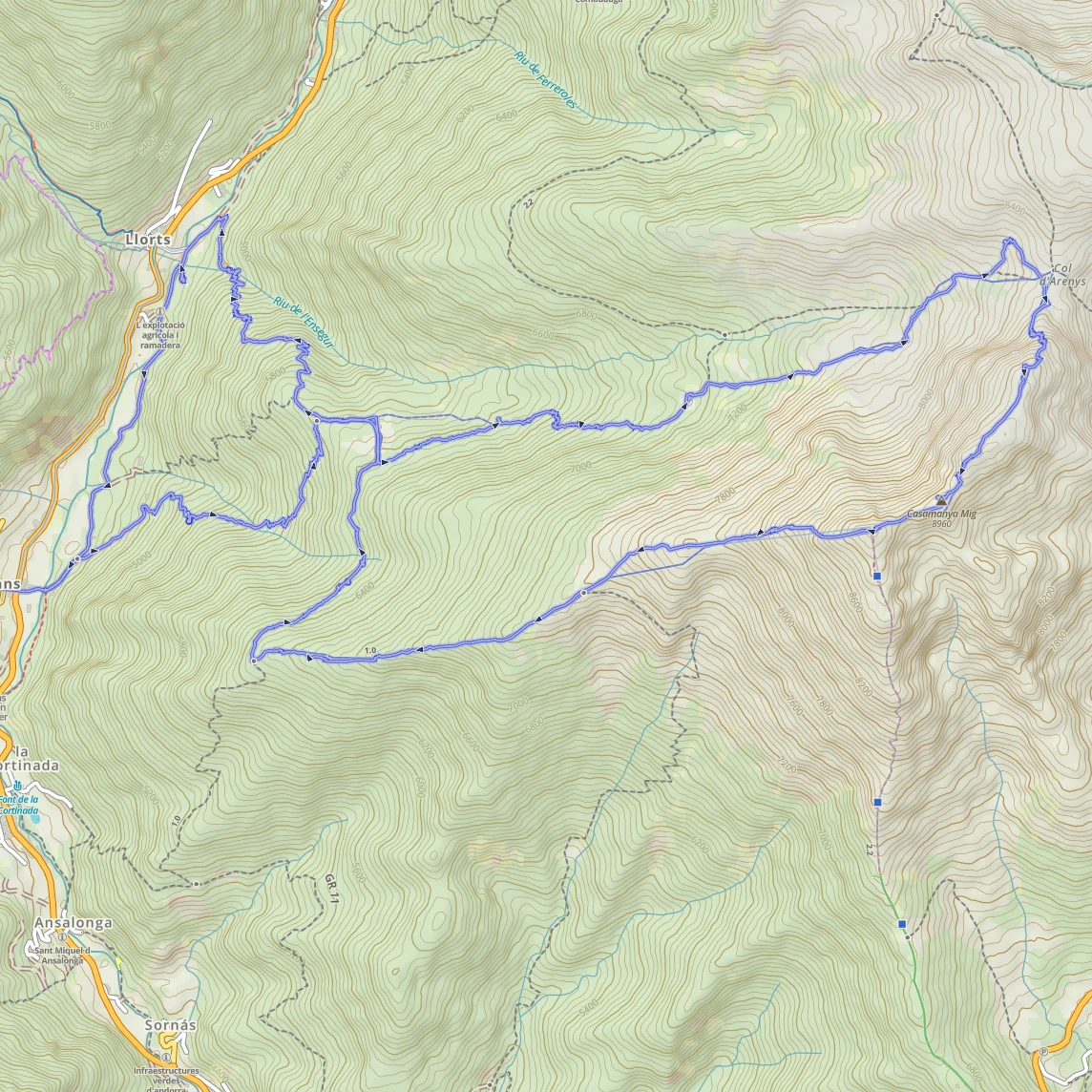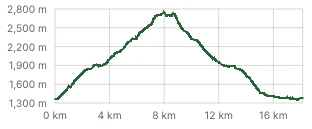The Hike
I recently did a six hours hike with a hardcore outdoor enthusiast friend. He wanted to go from Arans to a mountain pass called Coll d’Arenes before the end of the season, and he invited me.
We were at the trailhead in Arans by 07:30. The route coursed up a west-facing mountain, so we were in the shade for most of the climb. Once we were above 2,400 m, I noticed my hands getting numb from the cold, but my vipassana training kicked in, and I kept repeating “anicca” until the unpleasant sensations disappeared.
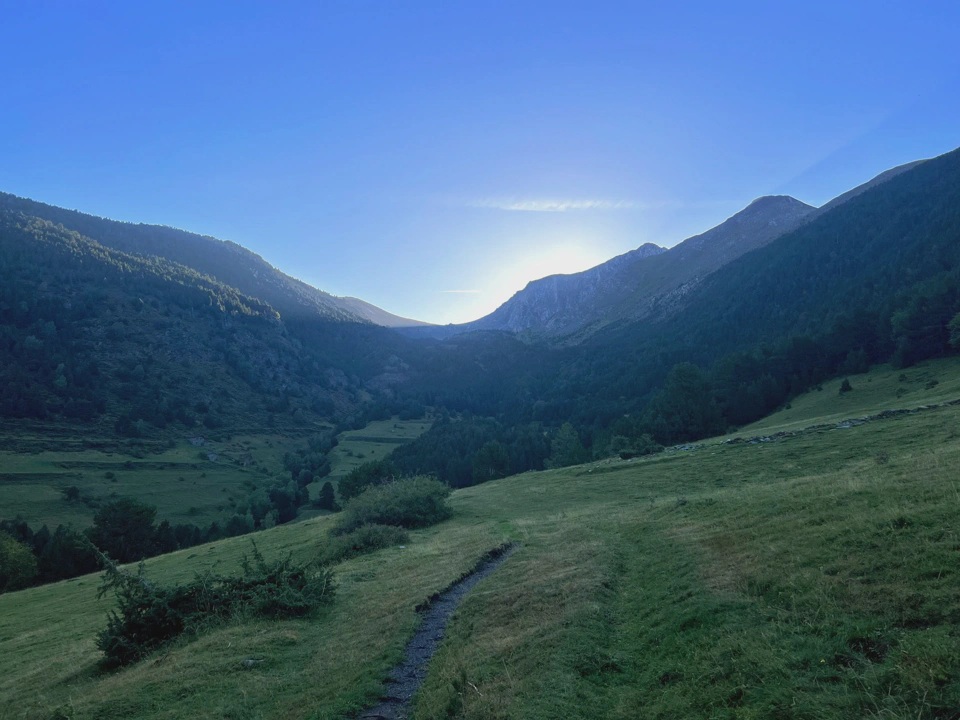
At around 10:20, we reached Coll d’Arenes, and a few minutes later, the sun finally rose beyond the mountains bathing the spectacular landscape of black sand 1 and yellow grass around us with light. We explored an area near the pass where tiny water streams seeped from the ground and merged into the Ríu de l’Ensegur. I had never seen anything like that; I thought rivers were always born above ground. Following my friend’s lead, I drank from it. It tasted metallic, but my mind reassured me that it was pure and healthy mineral water.
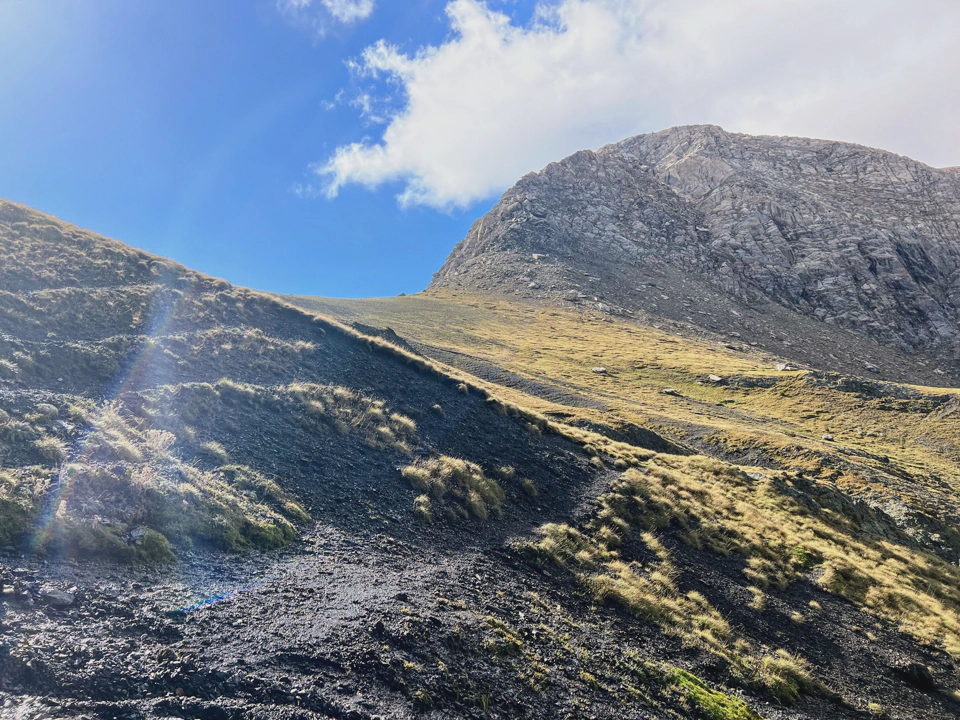
We weren’t done climbing, though. We still had a 100 m high and nearly vertical slope in front of us before reaching the peak of Casamanya Nord. I felt like a pro clambering and holding on to chain handrails spread every few meters.

I talked during most of the hike, but as soon as we reached the top, my mind instantly shut up. It’s like when you realize you’ve been talking out loud inside a cathedral. The vastness and beauty of places like this always leave a strong impression on me. I want to believe that I was an air elemental in a previous life.
My friend said that you can see all of Andorra from here because of the height and central location.
After enjoying the views a bit longer, we followed the trail along the mountain ridge 2 and reached two other peaks: Casamanya Mig and West.
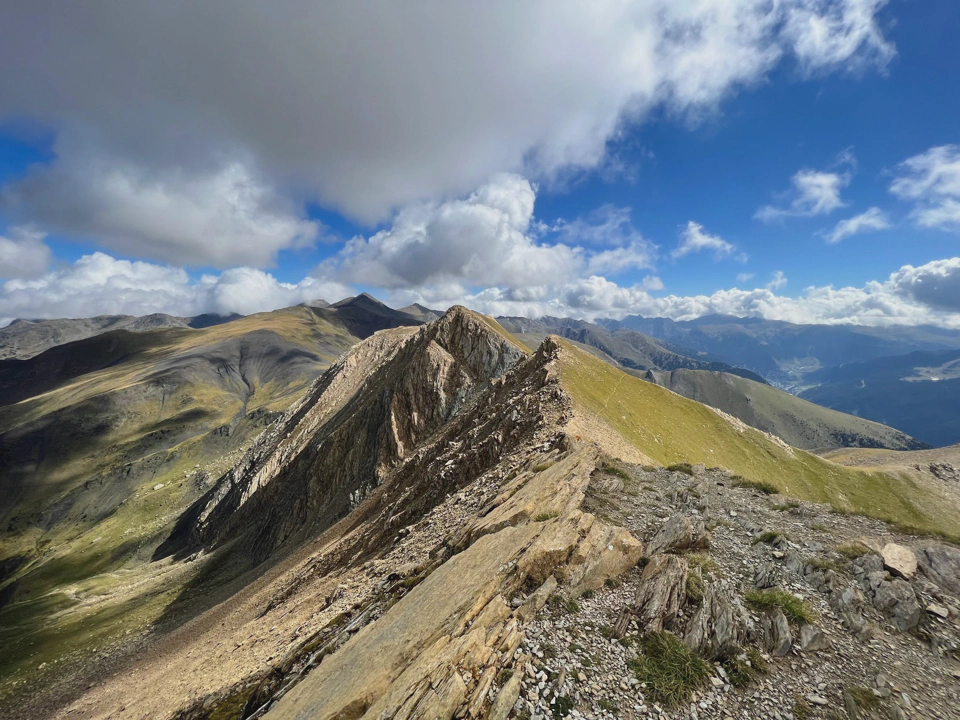
We found blade-like rock formations all over Casamanya Nord and Mig. It seemed as if the mountain had slowly rotated throughout the eons, and they look the lair of an evil mountain dragon.
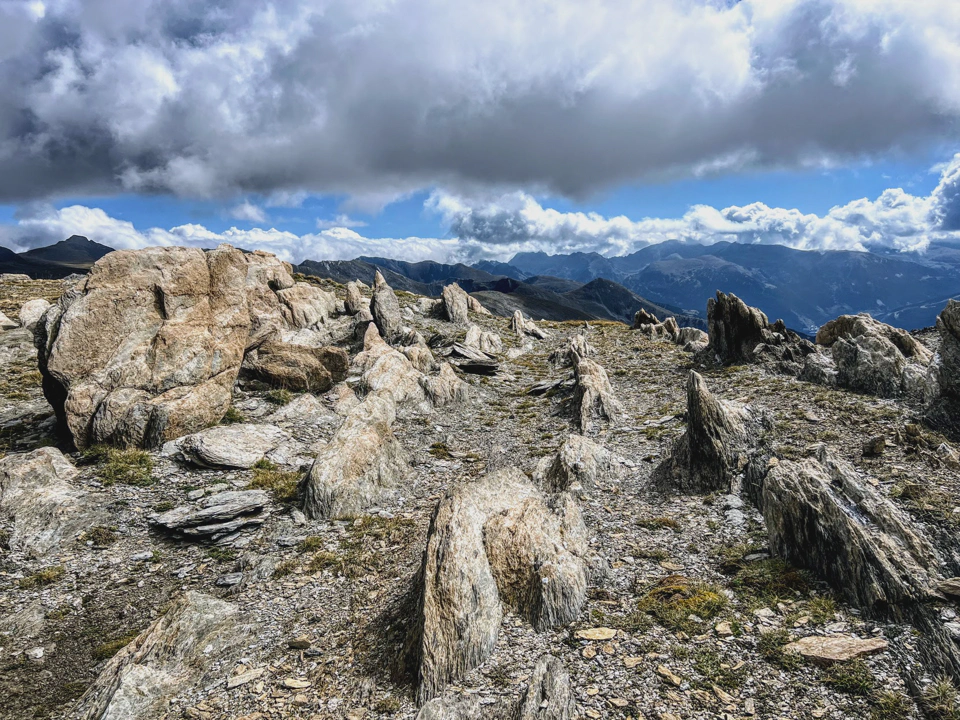
After a pitta and hummus break, we started our descent through the southern slope and dense forests. A couple of hours later we were back at Arans with surprisingly little soreness.
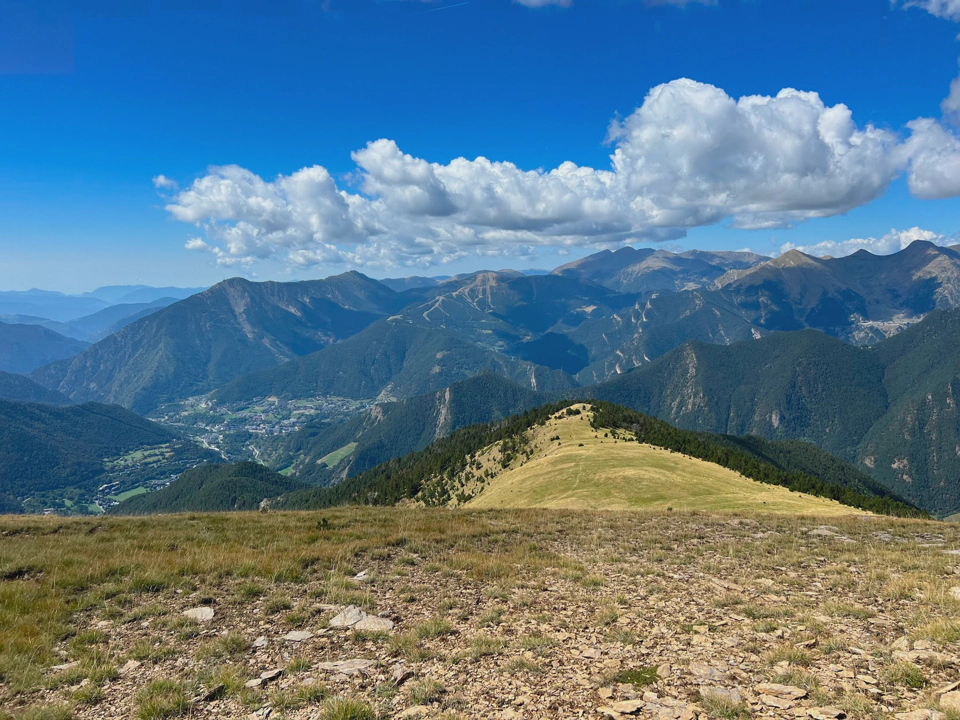
Throughout the hike, I observed my friend move and found it fascinating. He would first look right in front of his feet, then at the next few steps, then left, then right, and finally back to his feet. It was automatic. It’s no wonder that during the hike we saw more animals than I remember ever seeing while hiking: vultures, chamois, deers, a marmot, horses, and several unidentified bird species. He also shared interesting tidbits about each animal we encountered and some that we didn’t. For example, I learned that vultures wake up late to use hot air currents and preserve energy; deers wander alone and stick to forest areas where it’s easy to hide; chamois are more social and prefer rocky slopes, and there are two rare bearded vultures in Andorra. My friend also knew about the area’s geology, including ancient glacier locations, and why there are no Edelweiss flowers in Andorra. And to top it all, he also shared practical tips on checking the safety of mountain chains, how to better read the weather before and during an outing, and other advanced hiking information I have never found online.
I felt like a blind and noisy mole hiking with a native Indian American who could see the world in 26 dimensions.
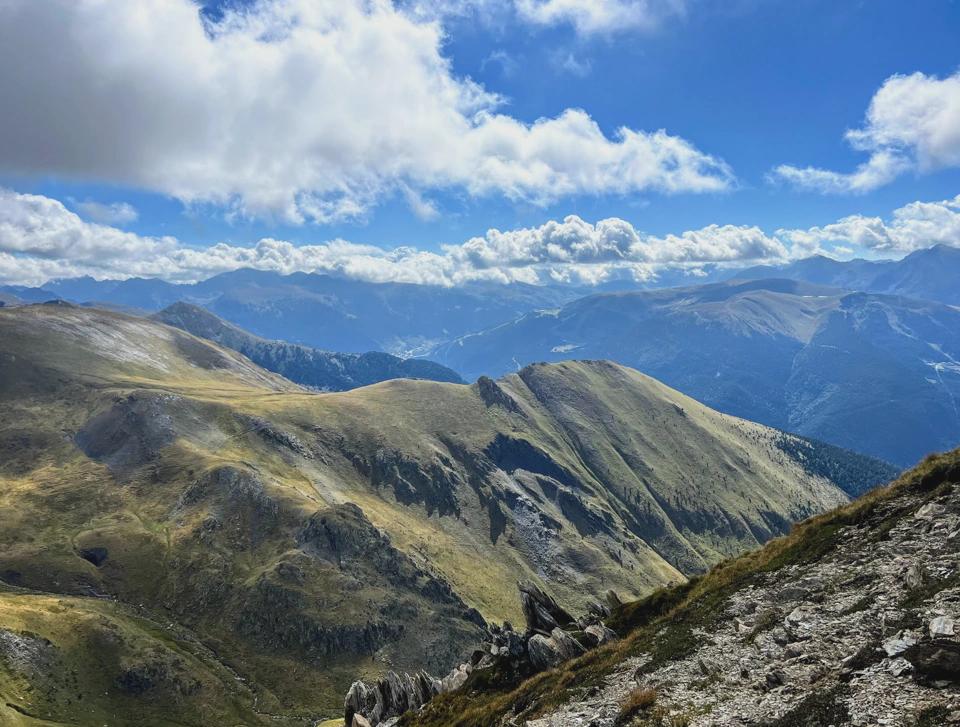
We also talked about a few other topics that I’m passionate about.
The power of self-talk
My friend used to practice orienteering, where you have between 45 and 90 minutes to race through a series of checkpoints equipped only with a compass and a map. He was serious about it, training many hours per week for a long time. At some point, though, he plateaued and sought help from a psychologist who helped him analyze his self-talk during races. Together they developed tools to change it, which shaved minutes off his racing times 3. What I found most fascinating from his account was the level of detail and self-monitoring that they went to. The day after this hike, I applied what I understood they did to my hatha yoga, resistance training, and tratak practice. The results were incredible. I had also plateaued for several months, particularly in my hatha and tratak practice, and I couldn’t increase my concentration. But the changes I made helped me break through that plateau, and I’m now practicing at the highest levels of concentration I remember ever reaching. Gratefulness falls short of what I feel.
Intuition
My friend relies on his intuition in many aspects of his life, which shows in his calm and observant demeanor. During our hike, I saw him stop several times and stand still, looking around as if nature were talking to him. It reminded me of Alex Honnold in Free Solo. Other insanely skilled people I’ve read about or met seem to share this trait. I drool when I see people with this skill because it’s one of my current self-growth goals. And seeing other people so further ahead is a powerful motivator.
Checklists
My friend said he used checklists, something I found surprising given his intuitive bent, and described how he uses them. He writes them when he wants to change a habit, reads them before practicing, tries to remember to apply them during practice, and then throws them away once it’s become automatic. It served as a reminder that READ-DO 4 checklists can be fast; when I don’t follow my checklists, it’s because I feel they’re too slow. An example he shared of using checklists that stuck with me: “When I reach the top of the hill, I will be in hypoxia. And even though I will believe that I can still think clearly, I won’t; it’s a fact. If I’m unsure of where the next checkpoint is, climb slowly to reduce the level of hypoxia and think more clearly.”
Does knowledge help or hinder seeing reality as it is?
Connected to the previous topic, we also discussed whether knowledge helps or hinders the perception of an object. My friend’s position is that when your mind is full of thoughts about something, it makes it hard to enjoy the thing because it’s hard to stop the thoughts. For example, a non-architect looking at the Guggenheim will, perhaps, enjoy how the building makes him feel. In contrast, an architect will start thinking about structure, design, etc., and not see the building. Spiritual teachers like Krishnamurti insist on this point of trying to see things without the mind (Observing clearly, Learn to observe, On the difference between observing and thinking about oneself).
My position was that if you know nothing about something you’re seeing, you will only see the shallow and visible and miss the deep and invisible. For example, someone without formal musical education will listen to a particular musical piece and, perhaps, think “I love it,” without knowing why. On the other hand, a musician might see hidden musical structures and enjoy “flavors” that escaped the first person. At least this is why I think my mom enjoys classical music so much, but I can’t stand most of it.
As my friend’s example shows, knowing how something works isn’t necessary to enjoy it, but the experience is different. The informed experience seems more useful and memorable, but I also see how the uninformed experience is purer. I’m still working on becoming a better observer, so this view will likely change.
How do I grow from this?
- Remember how the new levels of concentration during my deliberate practice feel like. Keep trying to reduce the amount of distracted time. Remember hypoxia and self-talk.
- Spend more time with other people. I would have never predicted how much I could get out of spending time with this friend. I went hiking with him because I thought it would be fun, but my mind kept rattling me about its usual cost-benefit calculations. Had I listened to it, I would have missed a lot.
- I don’t have an accurate view of my physical abilities. Before the hike, I worried about slowing my friend down because the hike looked so far beyond my abilities. However, I only noticed slight soreness in the quads when we reached the top and more generalized leg tiredness near the end. Observe your body more attentively; overshooting is as bad as undershooting; it almost made me say “no” to this opportunity.
- I didn’t follow my hiking preparation checklist because someone else was planning the hike. Habit change: I follow my hiking checklist when I go on a hike, not only when I’m the one planning the hike.
- Keep stilling my mind, practicing my observation skills, and try to talk less.
Footnotes
-
Atul Gawande’s classification described in The Checklist Manifesto: in DO-READ order matters, you do things following the checklist; in DO-CONFIRM checklists order doesn’t matter, you do things and then read the checklists to make sure you didn’t miss anything. ↩︎
This entry is part of the series Andorra (2020 - present):
- Hiking to Étangs De Fontargente
- Hiking to Coll d'Arenes (This entry)
- Hiking to Casamanya
